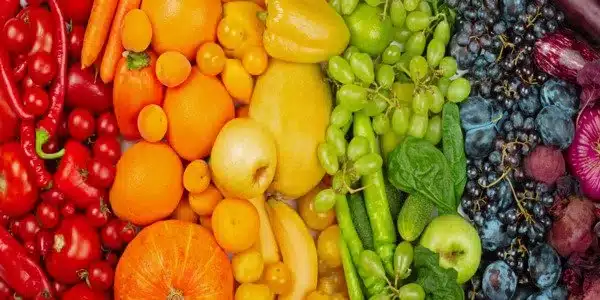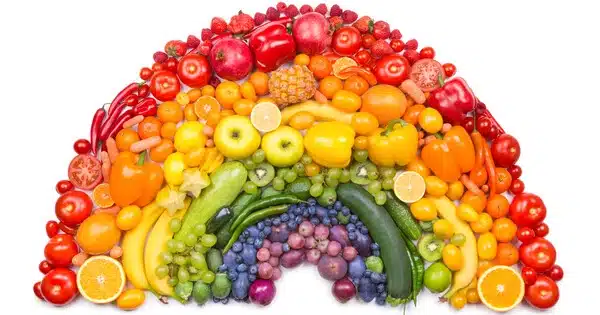While consuming a balanced diet rich in colorful fresh foods is beneficial for overall health, there isn’t direct evidence to suggest that it specifically improves athletes’ vision. However, certain nutrients found in colorful fresh foods may support eye health and potentially contribute to maintaining good vision.
Nutrition is an important part of any top athlete’s training program. And now, a new study by researchers from the University of Georgia proposes that supplementing the diet of athletes with colorful fruits and vegetables could improve their visual range.
The paper, which was published in Exercise and Sport Sciences Reviews, examines how a group of plant compounds that build up in the retina, known as macular pigments, work to improve eye health and functional vision.
Previous studies done by UGA researchers Billy R. Hammond and Lisa Renzi-Hammond have shown that eating foods like dark leafy greens or yellow and orange vegetables, which contain high levels of the plant compounds lutein and zeaxanthin, improves eye and brain health.
While much of the research into macular lutein and zeaxanthin has focused on health benefits, higher concentrations of these plant pigments improve many aspects of visual and cognitive ability.
Jack Harth
“While much of the research into macular lutein and zeaxanthin has focused on health benefits, higher concentrations of these plant pigments improve many aspects of visual and cognitive ability. We discuss their ability to improve vision in the far distance or visual range in this paper,” said lead author Jack Harth, a doctoral candidate in the University of Georgia’s College of Public Health.
Visual range, or the ability to see a target clearly from a distance, is an important asset for top athletes in almost any sport. The effects of blue light contribute to objects becoming harder to see and appearing fuzzier as they get further away from our eyes.
“From a center fielder’s perspective, if that ball’s coming up in the air, it will be seen against a background of bright blue sky, or against a gray background if it’s a cloudy day. Either way, the target is obscured by atmospheric interference coming into that path of the light,” said Harth.
Many athletes already take measures to reduce the impact of blue light through eye black or blue blocker sunglasses, but eating more foods rich in lutein and zeaxanthin can improve the eye’s natural ability to handle blue light exposure, said Harth.

When lutein and zeaxanthin are absorbed, they form yellow pigments in the retina and act as a filter to prevent blue light from entering the eye. Previous research had been done in the 1980s to test pilots’ visual rangeability, and Hammond and Renzi-Hammond have done more recent studies on how macular pigment density, or how much yellow pigment is built up in the retina, is linked to a variety of eye health and functional vision tests.
“In a long series of studies, we have shown that increasing amounts of lutein and zeaxanthin in the retina and brain decrease glare disability and discomfort and improve chromatic contrast and visual-motor reaction time, and supplementing these compounds facilitates executive functions like problem-solving and memory. All of these tasks are particularly important for athletes,” said corresponding author Billy R. Hammond, a professor of psychology in the Behavior and Brain Sciences Program at UGA’s Franklin College of Arts and Sciences.
According to Harth, this paper brings up to date research on the links between macular pigment and functional vision and asks what the evidence suggests about optimizing athletic performance.
“We’re at a point where we can say we’ve seen visual range differences in pilots that match the differences found in modeling, and now, we’ve also seen it in laboratory tests, and a future goal would be to actually bring people outside and measure their ability to see contrast over distance through real blue haze and in outdoor environments,” Harth said.
But, before you start eating kale in the hopes of improving your game, he warns that everyone is different. That could imply that the way our bodies absorb and use lutein and zeaxanthin varies, and it may take some time before you notice any improvements, if any.
Nonetheless, the authors argue that the evidence of the overall health benefits of consuming more lutein and zeaxanthin is reason enough to add more color to your diet. “We have data from modeling and empirical studies that show that having more macular pigment in your retina improves your distance vision. The application for athletes is obvious,” Harth said.














